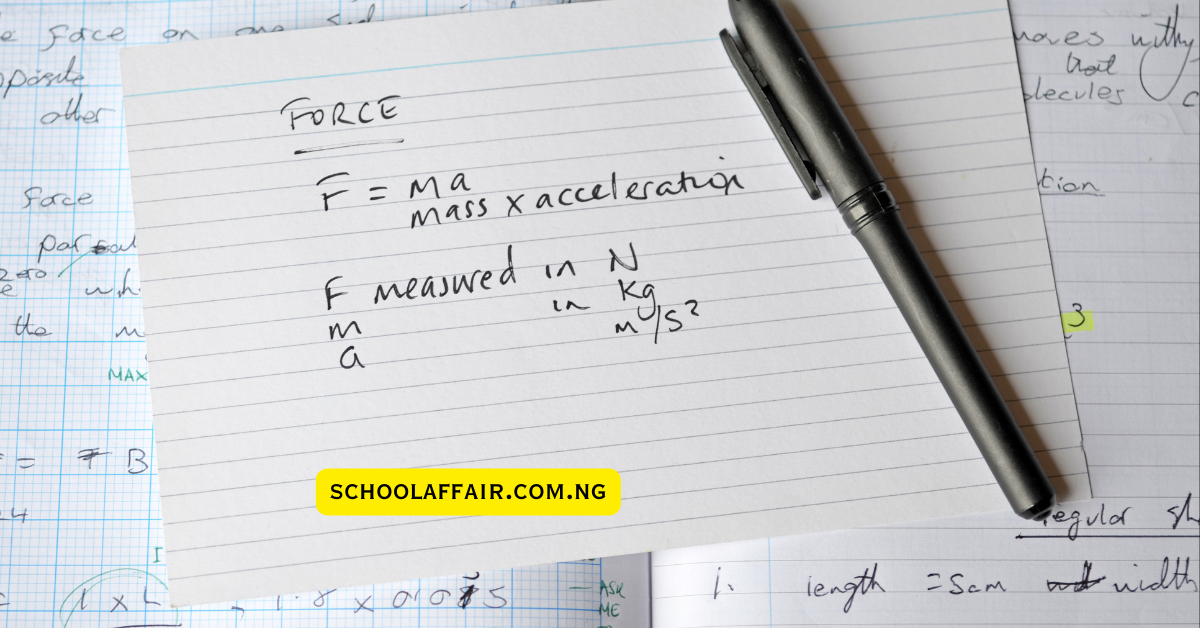Physics can be a challenging subject for many undergraduates, especially at the GCSE level. With a wide range of topics and equations to remember, it can be overwhelming to keep track of everything. That’s where a formula sheet comes in handy. A formula sheet is a condensed list of all the important equations and constants that you need to know for your GCSE physics exam. In this article, we will discuss the importance of a formula sheet and provide you with a comprehensive list of equations and constants to include in your own physics GCSE formula sheet.
Why use a formula sheet?
A formula sheet is a valuable tool for any student studying for their GCSE physics exam. It allows you to have all the important equations and constants in one place, making it easier to revise and memorize them. It also saves you time during the exam, as you won’t have to flip through your textbook or notes to find the equation you need. Additionally, having a formula sheet can help you stay organized and focused during your revision, as you can easily see which equations you need to work on.
What to Include in Your Formula Sheet
When creating your own formula sheet, it’s important to include all the equations and constants that you will need for your exam. Here is a comprehensive list of equations and constants that you should consider including in your physics GCSE formula sheet:

Mechanics
- Newton’s Second Law: F = ma
- Weight: W = mg
- Work: W = Fs
- Power: P = W/t
- Kinetic Energy: KE = 1/2mv^2
- Gravitational Potential Energy: GPE = mgh
- Elastic Potential Energy: EPE = 1/2kx^2
- Pressure: P = F/A
- Density: ρ = m/V
- Speed: v = d/t
- Acceleration: a = (v-u)/t
- Momentum: p = mv
- Force of Friction: F = μR
Electricity
- Current: I = Q/t
- Potential Difference: V = W/Q
- Resistance: R = V/I
- Ohm’s Law: V = IR
- Power: P = IV
- Energy: E = Pt
- Charge: Q = It
- Coulomb’s Law: F = kQ1Q2/d^2
- Electric Field Strength: E = F/Q
- Capacitance: C = Q/V
- Energy Stored in a Capacitor: E = 1/2CV^2
Waves
- Wave Speed: v = fλ
- Frequency: f = 1/T
- Period: T = 1/f
- Refractive Index: n = c/v
- Magnification: m = hi/ho
- Critical Angle: sin c = 1/n
- Snell’s Law: n1sinθ1 = n2sinθ2
- Doppler Effect: f’ = f(v±v0)/(v±vs)
Light
- Speed of Light: c = 3.00 x 10^8 m/s
- Planck’s constant: h = 6.63 x 10^-34 J.s.
- Energy of a Photon: E = hf
- Refractive Index: n = c/v
- Magnification: m = hi/ho
- Critical Angle: sin c = 1/n
- Snell’s Law: n1sinθ1 = n2sinθ2
Tips for Creating Your Formula Sheet
- Use color coding to differentiate between different topics or types of equations.
- Include diagrams or illustrations to help you remember the equations.
- Make sure to include units for each equation.
- Use abbreviations or symbols to save space.
- Keep your formula sheet neat and organized for easy reference.
By creating a comprehensive formula sheet for your GCSE physics exam, you can save time and stay organized during your revision. Make sure to include all the important equations and constants and use it as a tool to help you ace your exam. Good luck!



